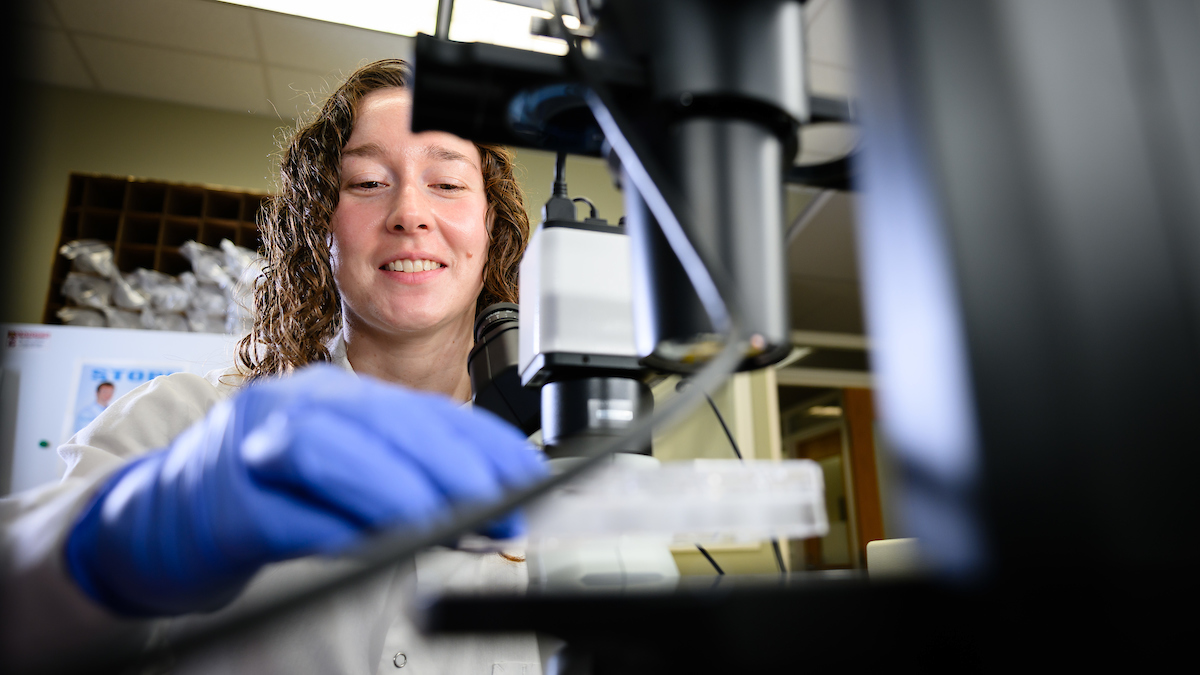First Lizard Genome Sequenced, Provides Insight into Evolution
If you live in the southeastern United States, you see these little guys (and gals) everywhere—the ubiquitous green or brown Anole lizard known scientifically as Anolis carolinensis. But aside from being cute and able to regenerate part of its tail, this little lizard—and its newly sequenced genome—may help scientists solve an evolutionary riddle.
In a paper appearing in Nature, a consortium of scientists, including Dr. Matthew Breen, a professor of genomics at NC State University’s College of Veterinary Medicine, share the information they have gleaned from the first sequencing of a reptile’s genome. They believe that A. carolinensis could be important for understanding the evolution of the amniotic egg, and that its genome could help them discover how it has so easily adapted to a number of various habitats, as well as lead them to the common ancestor that all amniotes (species that reproduce via amniotic eggs) share.
Dr. Breen, with research associate Christina Williams, anchored the genome sequence to the Anole chromosomes using a sophisticated gene mapping approach. During this process they identified an X chromosome in A. carolinensis. Although a Y chromosome was not identified, the researchers believe that anoles possess both X and Y chromosomes given that male and female cells have the same number of chromosomes.
Amniotic eggs are eggs that have a shell and can hold water. They are an important evolutionary deal because they allowed species to be able to reproduce on land. Scientists have sequenced the genomes of mammals and birds who reproduce in this way, but A. carolinensis is the first reptile.
The sex of the Anole lizard is determined genetically, unlike some species whose genders are determined by  temperature. Prior to this sequencing, scientists did not know whether the Anole lizard had X and Y chromosomes, like mammals, or Z and W chromosomes, like birds.
temperature. Prior to this sequencing, scientists did not know whether the Anole lizard had X and Y chromosomes, like mammals, or Z and W chromosomes, like birds.
In addition, Dr. Breen’s lab in the NC State Center for Comparative Medicine and Translational Research found that some of the larger chromosomes undergo strange structural changes that have not been previously reported in animals.“The little critters have a fascinating genome organization and we hope that further study of this will provide us with greater insight in genome changes that have taken place during evolution,” says Dr. Breen.
The researchers hope that this new genome sequence may eventually tell us more about how land animals adapted and evolved over time.
Dr. Breen’s CCMTR lab has been involved in sequencing the genomes of numerous animals, including the 2004 sequencing of the canine genome.
The Center for Comparative Medicine and Translational Research (CCMTR) is a community of more than 100 scientists from five NC State colleges. These investigators are involved in collaborative ”One Health” studies with government, private, and other academic researchers to advance knowledge and practical applications that improve the health of animals and humans.
_____
Summary article in Nature News / News report in Science Daily / Full article in Nature


